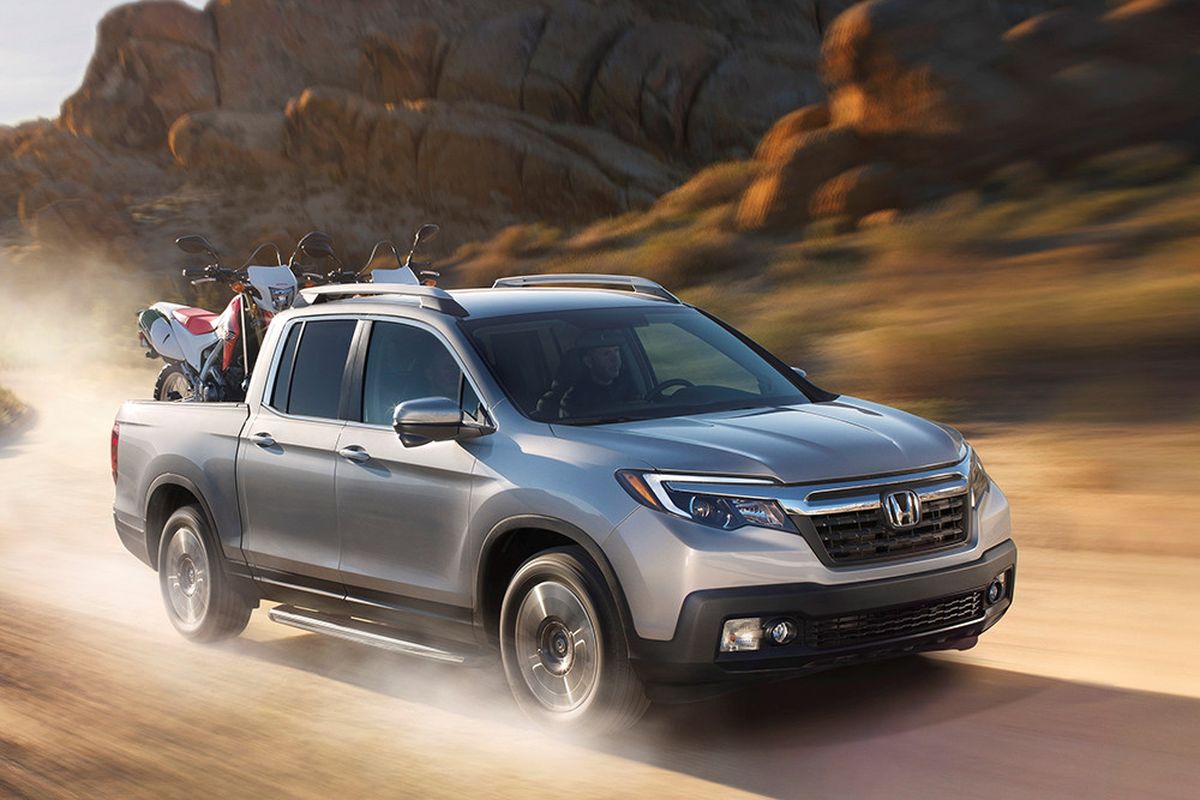Don Adair: Unconventional Honda Ridgeline stands out in pickup crowd

Honda’s Ridgeline pickup just complete a two-year hiatus during which it did some soul-searching and realigned its priorities.
Now, the five-passenger, midsize pickup is back. And what it gained in the transition far overshadows what it lost. Gone for good are the flying-buttress C pillars, which Honda meant as a styling statement but which only served to reduce visibility and complicate access to the bed.
Gains include more horsepower and better economy, a longer wheelbase and a larger bed. A front-wheel-drive version debuts and available tech now includes a full suite of driver-assist and safety systems.
Unlike conventional trucks, which are built on sturdy steel frames, Ridgeline is built on a car-like unibody. Superior ride and handling result, but at the expense of some traditional truck capabilities. Ridgeline’s 5,000-pound towing capacity falls shy of its more robust competitors’. Its light-duty AWD system and 7.3 inches of ground clearance (down from the original’s 8.2 inches) limit its off-road prowess.
On the other hand, Ridgeline’s 1465-pound payload tops the segment. And its bed — formerly a stubby, squarish thing — grows longer and is now larger than the short beds offered by the competition.
The versatile, dent-resistant bed is wide enough to accommodate a 4x8 sheet of plywood and conceals a locking under-floor well, with drain plug. It can be used to store wet gear or filled with ice and used as a mobile cooler.
The tailgate swings open from the side to offer easy access to the trunk, or drops like a conventional truck’s. This year, the bed adds LED cargo lighting and a 115-volt two-prong power outlet.
The Ridgeline’s 3.5-liter V-6 makes 280 horsepower, up 30 from the previous model. Torque is up 47 pound-feet, from 200 to 267. Its automatic transmission gains a gear, going from five to six.
Ridgeline accelerates quickly and smoothly and the transmission makes good, sure shifts.
The AWD system includes driver-selectable terrain settings (Normal, Snow, Mud and Sand). By default, 100 percent of the torque is directed to the front wheels, with up to 70 percent available to the rear wheels as needed.
The system does not include a low-range transfer case — an essential for serious off-roading — but, at low speeds in deep mud or snow, the rear differential can be locked to maintain the front/rear power split.
Ridgeline’s cabin is roomier and quieter than its rivals’ and has a lower step-in height. Its seats are large and comfortable and the dashboard and control panel layouts are attractive and ergonomic. Fit-and-finish and materials quality are very good.
The rear seating area is large enough to comfortably accommodate three. The bottom cushions can be flipped up to create up a large storage area.
A rearview camera is standard and upper trims get Honda Sensing, Honda’s wide-ranging driver-assist package (adaptive cruise; forward-collision warning, with emergency braking; lane-departure warning, with lane-keeping assist and road-departure mitigation; more).
Honda brass believes this truck-that’s-not-a-truck is sufficiently utilitarian to entice buyers who need neither the capabilities or the liabilities of a traditional truck. I wouldn’t bet against them.
Contact Don at don@dadair.com, or visit www.dadair.com.
2017 Ridgeline AWD RTL-E
Vehicle base price: $29,475
Trim level base price: $41,370
Options: The Ridgeline AWD RTL-E is a fully equipped vehicle; our tester came with no additional options.
Tow capacity: 5,000 pounds
EPA ratings: 21 combined/18 city/25 highway
Regular unleaded fuel specified
